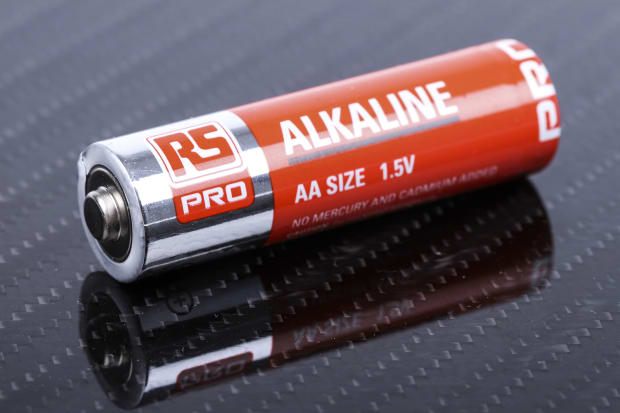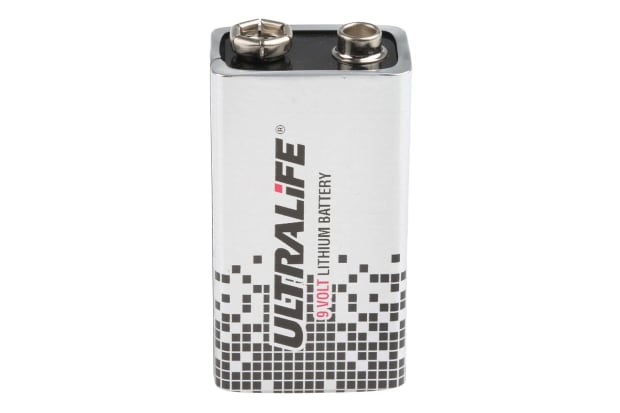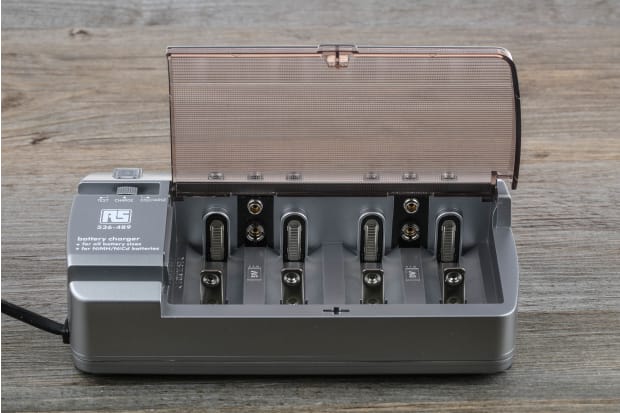- Published 23 Apr 2023
- Last Modified 4 Sept 2023
- 6 min
What are the Different Types of Batteries?
Batteries can be categorised by size, voltage, and rechargeable ability. Explore different battery types, covering alkaline, NiMH, and Lithium-ion batteries. Find help to choose the right battery for your needs, along with storage and disposal advice.

Batteries allow you to keep working without the limitations of cables, plugs, and access to mains electricity. The range of batteries can sometimes be a cause of confusion, but the correct choice of battery allows you to keep working effectively and efficiently. This guide will cover the basics of how batteries work and explore the different types of batteries that are available, along with some tips on lifetime, storage, and disposal.
How Batteries Work
A battery works by converting chemical energy into electrical energy. A chemical reaction inside the battery, or cell, causes one end to become negatively charged and the other positively charged. This difference in charge, known as potential difference, causes electrons to flow around the circuit that the battery is connected to.
A battery consists of two different conducting metals and an electrolyte - a liquid or dry powder that can conduct electricity. When the two electrodes of the battery are connected in a circuit, a chemical reaction takes place. Positive ions are attracted to the negative electrode (cathode) and negative ions are attracted to the positive electrode (anode). The negative electrons in the wires of the circuit are pushed around the circuit by this difference in charge, transferring energy to the other components in the circuit.
The voltage of a battery refers to the difference in charge (potential difference) between the two ends of the battery. The higher the voltage, the more current is pushed around the circuit which means more energy is transferred.
Different Types of Batteries
There are three different types of batteries that are commonly used - Alkaline, Nickel Metal Hydride (NiMH), and Lithium Ion. The use of different metals and electrolytes in these batteries gives them different properties which means they are suited to different contexts.

Alkaline Batteries
Alkaline batteries are the most popular type of single-use battery. The cheapest category of battery, these non-rechargeable batteries maintain a consistent discharge throughout their lifetime, leading to reliable performance. While convenient, the disposable nature of alkaline batteries means that they are not an environmentally friendly option.
NiMH Batteries
NiMH batteries were the first rechargeable batteries to be developed. This ability is an advantage in terms of efficiency and financial impact. NiMH batteries can take a long time to charge, and the more times they have been recharged, the less power they produce.
Lithium Ion Batteries
Lithium Ion batteries are a newer development in rechargeable batteries and have become commonly used in laptops and phones. More expensive than NiMH at the point of purchase, the amount of possible recharges means that they will save money over time. Quick charging and more consistent power output throughout their lifetime also contribute to the popularity of lithium batteries.
Different Sizes of Batteries
The different sizes of batteries are based on the device in which they are being used, both in terms of physical size and the power required. Rechargeable batteries in consumer electronic products are designed with the size and shape of the specific device in mind. Replaceable batteries are usually cylindrical and come in sizes named AAA, AA, C and D.
AA batteries are the most commonly used type of battery worldwide and are probably the first thing that comes to mind when you hear the word battery. AAA batteries are a thinner and shorter version of AA. C batteries and D batteries get progressively larger. All these batteries are usually 1.5V, the larger battery size offering a longer lifetime. If more than 1.5V is required, then multiple batteries are used together.

9V batteries are cuboid-shaped with both terminals on the top of the battery. Button-shaped batteries are used in small devices that don’t require a high power output, such as watches or kitchen scales. Other devices may have batteries shaped specifically for them by the manufacturer. For example, many power tools have rechargeable batteries that are quick and easy to swap over when you are at work, but to replace them, users generally have to buy them from the original manufacturer.
How Long Do Batteries Last?

The lifetime of a battery depends on the rating and the power of the device it is being used in. Batteries are rated in milliampere-hours (mAh). A battery with a rating of 2000 mAh can deliver a consistent current of 2000 mA for one hour, or 1000 mA for two hours, and so on. The actual current produced will depend on the device being used.
Most AA and AAA batteries have a capacity of 2000–3000 mAh. In low-power devices such as an LED torch, this could last around ten hours. In higher-power devices, the battery will run out much more quickly.
Batteries can be stored, unused, for 10 years without compromising their performance, provided they are stored correctly.
How to Store Batteries
Batteries should be stored in their original packaging, at room temperature or below. Avoid storing batteries in humid conditions or direct sunlight. If the terminals of the batteries come into contact with each other or metal objects, they can discharge.
Older batteries can occasionally leak. The chemicals leaking from a battery are harmful to humans. If a battery is leaking, dispose of it immediately, without touching it, and wash your hands straight away. Remember to clean up any residue left behind.
Where to Dispose of Batteries
Batteries should not be disposed of with normal rubbish that is headed to landfill as their chemical contents can enter the ecosystem. Ideally, recycle your batteries so that they can be disposed of in a way which minimises the effect on the environment. Never throw batteries into a fire, as they can leak or break open.
How to Recycle Batteries
Batteries can be recycled by depositing them at a dedicated collection point. Check your local recycling centre along with many supermarkets and DIY stores which have battery recycling bins. Recycling batteries is important to prevent harmful chemicals from entering the environment, and also to avoid waste of valuable raw materials that can be used again.
Battery recycling facilities use physical or chemical processes to separate the metals from the discharged battery so that they can be used in the production of new products.